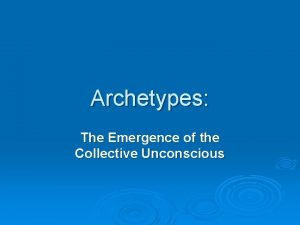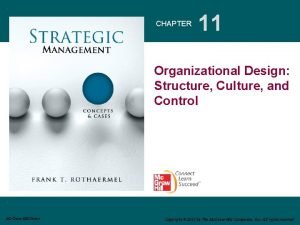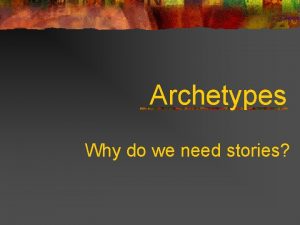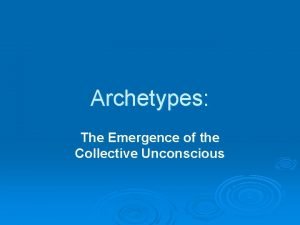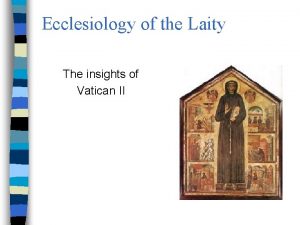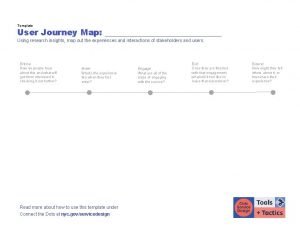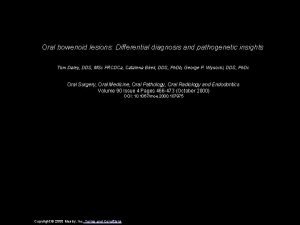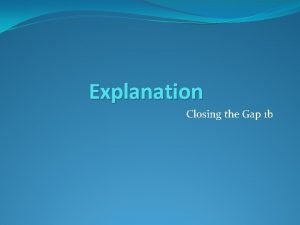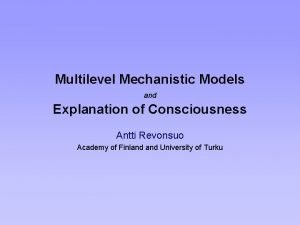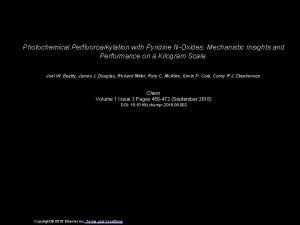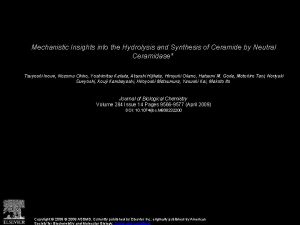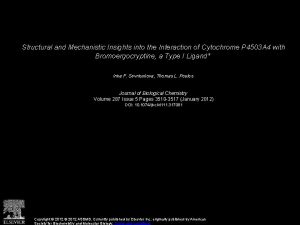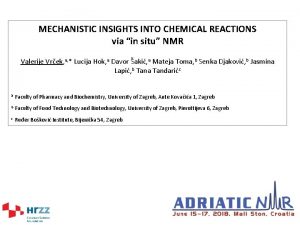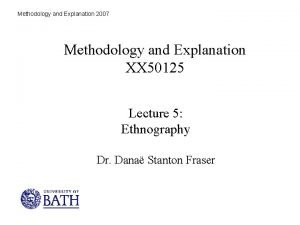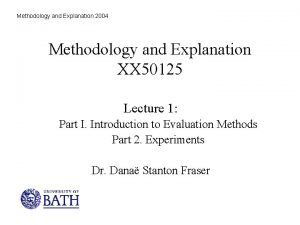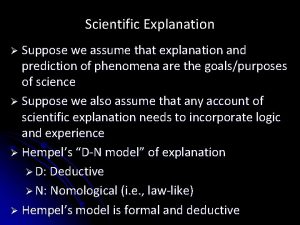Mechanistic explanation and the integration of insights from














- Slides: 14

Mechanistic explanation and the integration of insights from the humanities and cognitive sciences * Machiel Keestra, Institute for Interdisciplinary Studies, AIS Conference, Tuscaloosa, Oct. 8, ‘ 09 http: //home. medewerker. uva. nl/m. keestra

Overview: n n 2 * Interdisciplinarity and theoretical pluralism in the study of complex, multi-level systems Integration as the aim of interdisciplinary research Mechanistic explanation as an alternative integrative technique Aspects of mechanistic integration of insights of hermeneutics with cognitive science

Example: human action understanding Two rivalling perspectives: n Meaning of action requires involvement of socio-cultural and historical contexts n Action is determined by neural and biological factors and requires bottom-up explanation (compare simulation theory & theory) 3 *

Theoretical pluralism in multi-level systems Relative significance of theories (restricted domain) Multi-level systems: various constraints on normal functioning stem from distinct levels Relative causal autonomy at each level Different kinds of interactions between levels Intervention techniques differ per level How does ‘hermeneutics’ fit in such systems? n n n 4 *

No strict localization & identity of neural or mental functions 5 *

Multiple realizability of mental functions? Multiple functionality of mechanisms? ‘Early’ mechanisms are involved in many functions Developmental trajectories may differ Learning does result in different processing systems Possibility of individual processing routes Pathology can lead to compensatory mechanisms n n n 6 *

An Integrated Model of the Interdisciplinary Research Process A. n Drawing on disciplinary insights. 1. Define the problem or state the focus question 2. Justify using an interdisciplinary approach 3. Identify relevant disciplines 4. Conduct a literature search 5. Develop adequacy in each relevant discipline 6. Analyze the problem and evaluate each insight to it n B. n n n n n Integrating insights and producing an interdisciplinary understanding 7. Identify conflicts between insights and their sources 8. Create or discover common ground 9. Integrate insights 10. Produce an interdisciplinary understanding of the problem and test it (Source: Repko 2006, 123; Repko 2008, 142) Disciplinary insights = insights from disciplines, subdisciplines, interdisciplines, schools of thought etc. 7 *

Common ground always via conflicting insights? n n n Concepts Theories Methods Assumptions Values Principles § (Newell; Repko; e. a. ) or perhaps ‘simply’: n ‘conflicting’ evidence concerning (seemingly) similar phenomena? n unexpected factors modulate relatively stable phenomena? n only a single phenomenon (pathology) requires explanation? 8 *

Repko’s five techniques of integration: According to the sources of conflict and after discovery of common ground: theory expansion (addition of a factor e. g. ) re-definition (create common meaning) extension (beyond original domain/time) organization (relating re-defined concepts/assumptions) transformation (cf. opposing assumptions into variables) 1. 2. 3. 4. 5. (Repko, 2008) 9 *

Additional integrative technique: Mechanistic explanation. 1. Decompose a phenomenon 2. Try to identify & localize components & possibly sub-(sub-)components 3. Integrate these into a multi-level mechanism 4. Differentiate intra-level & inter-level relations/activities 5. Study role-functions & constitutive relations 6. Re-compose the mechanism in light of new results (Bechtel, 2006; Craver, 2007; e. a. ) 10 *

Phenomenon-oriented integration n n Mechanistic explanation aims at explaining a specific phenomenon Not so much causal but constitutive explanation The mechanism or components can still be involved in other phenomena, as well It may turn out to be necessary to add other components or levels, in light of new properties. 11 *

Research of mechanisms: intervention and detection are distributed among disciplines n n n Level-specific theories, methods, techniques For instance: bottom-up TMS intervention & behavioral results; or top-down cogn. psychological task designs & single cell recording; etc. The more results converge, the more robust the evidence is 12 *

Mechanistic integration of hermeneutics and cognitive science? n n Define all levels in terms of components & relations - e. g. semantic and symbolic networks & neural systems Investigate intralevel relations, e. g. between terms, symbols, contexts & neural networks Investigate inter-level relations/modulations, with intervention & detection techniques Focus on long-term, dynamic interactions that constitute the eventual mechanism: how to explain historical contingencies that influence neural systems? 13 *

Thanks for your presence! 14 *
 Innate wisdom vs. educated stupidity
Innate wisdom vs. educated stupidity Mechanistic approach to job design
Mechanistic approach to job design Match the global strategy with the appropriate structure
Match the global strategy with the appropriate structure Haven vs wilderness
Haven vs wilderness Nature vs mechanistic world archetype
Nature vs mechanistic world archetype Innate wisdom vs. educated stupidity archetype examples
Innate wisdom vs. educated stupidity archetype examples Three dimensions of corporate strategy
Three dimensions of corporate strategy Forward integration and backward integration
Forward integration and backward integration Integration
Integration Relie respondible lending solution
Relie respondible lending solution Analyzing and using marketing information
Analyzing and using marketing information Semi-tabular presentation
Semi-tabular presentation Insights and understanding ecclesiology
Insights and understanding ecclesiology Customer journey map template doc
Customer journey map template doc Relie responsible lending and insights engine
Relie responsible lending and insights engine
